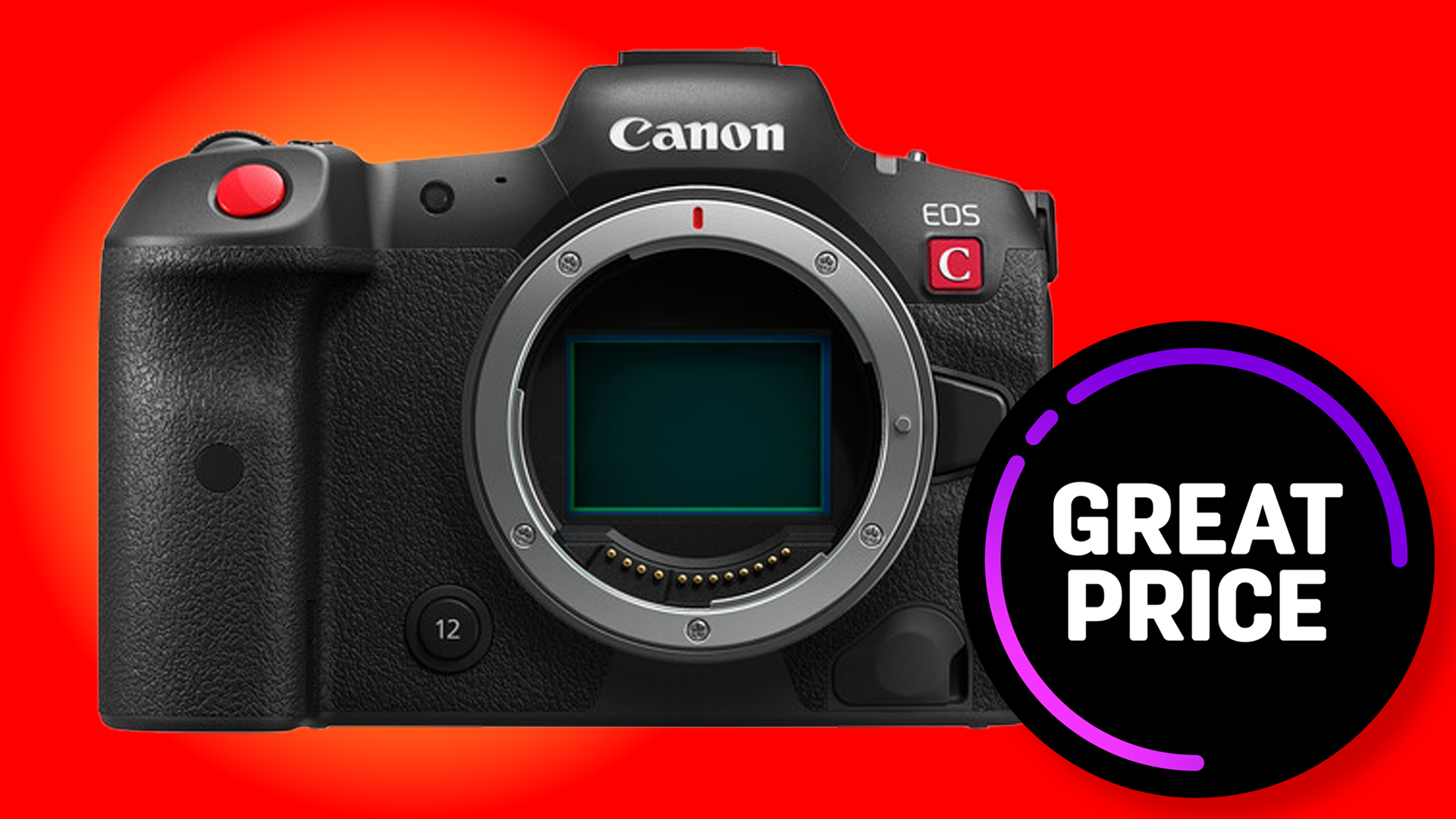The best drones for beginners: drones that keep it safe and simple
The best drones for beginners will be affordable, include instructions and have important safety features
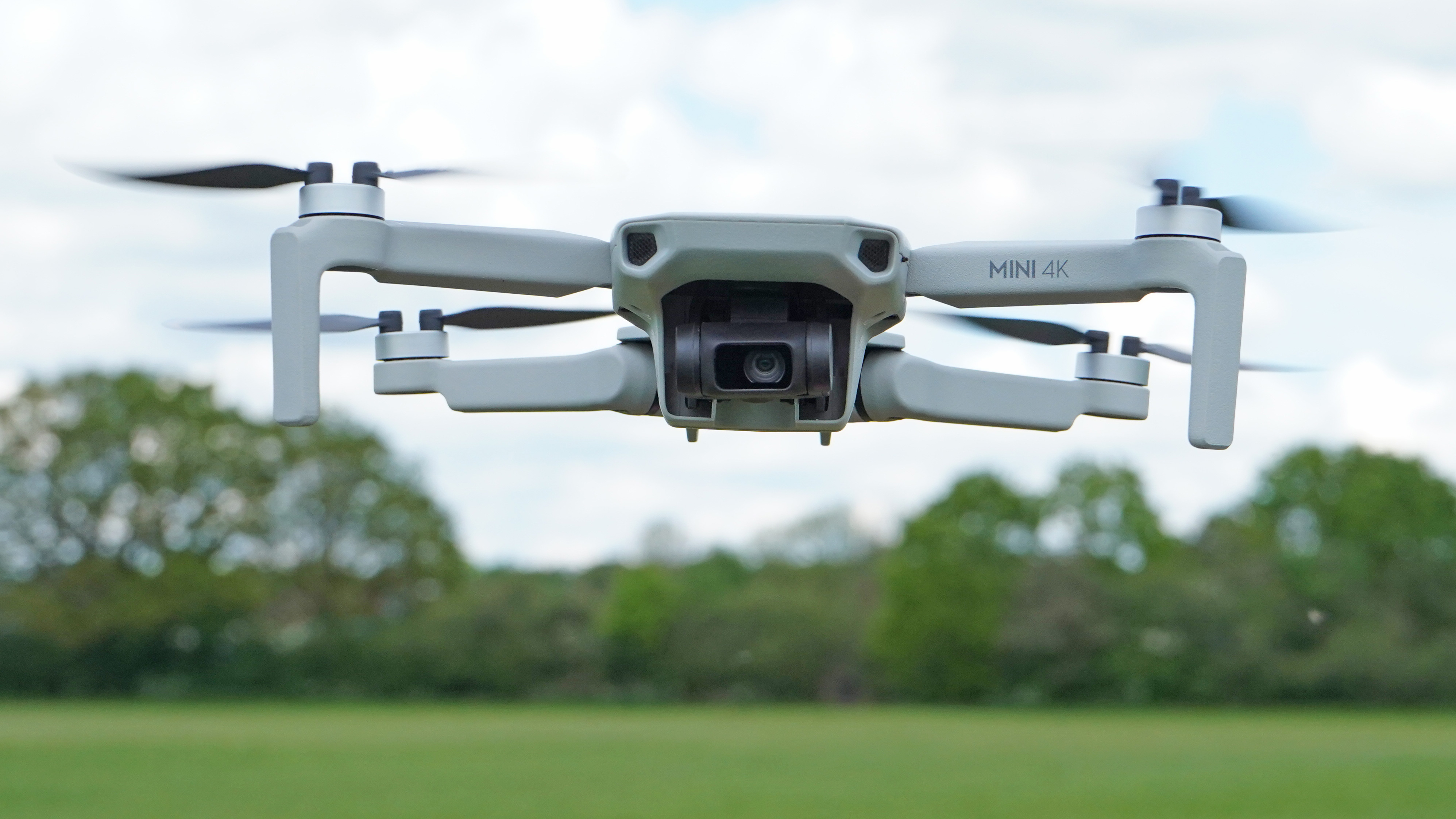
Getting started with drones opens the door to a lot of fun, new kinds of video and photography, and some great bonding experiences. I'm lucky enough to have a son old enough to share my passion so I have two perspectives on what makes a fun – and easy – drone for beginners.
I should say we also have a separate guide to the best drone for kids, but sometimes families all want to get involved, so it's worth covering all the bases – creative capabilities and ease of use (after all, what's easy for the kids is probably easy for us too... probably!)
At the other end of the scale, if fidelity is all that matters, we also have a best camera drones with some more money-no-object options. For beginner options, though, safety is a higher-ranking consideration. All the options here have different safety features, and I'll explain what they are and how they'll help you. From return-to-home to collision sensors, and the very familiar – but undeniably practical – safety cage!
Whether you're investing in a drone for aerial photography or videography, or even drone racing, some of the best drones you can buy don't cost as much as you think. This guide is aimed at people who haven't flown before but if you're thinking of upgrading check out the best indoor drones or the best FPV drones.
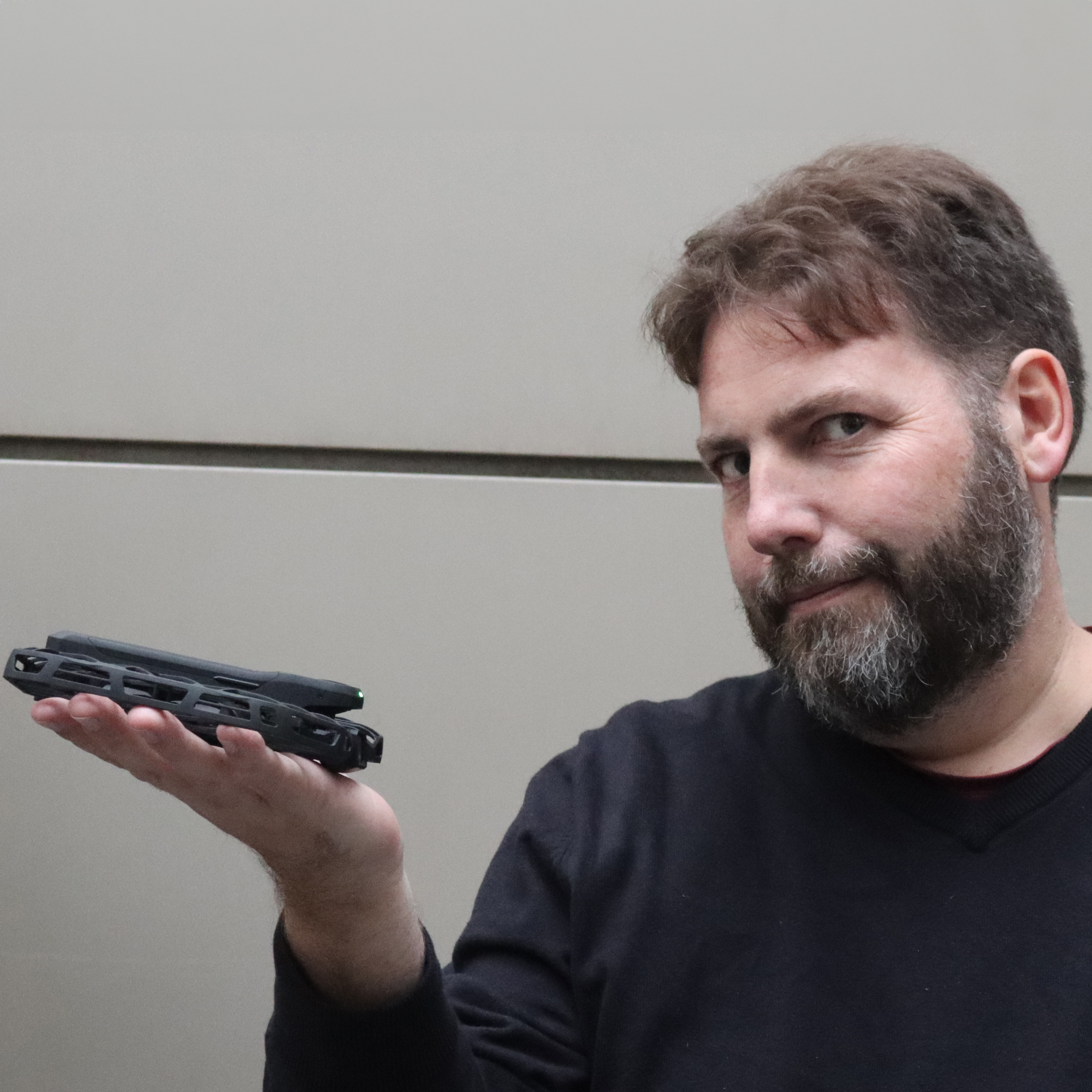
I've been building and flying drones for 15 years; people used to think of me as 'a bit odd' (they may still do) but I'm also an expert in my field, with years of professional experience and even some bestselling books (The Complete Guide to Drones and The Drone Pilot's Handbook).
The quick list
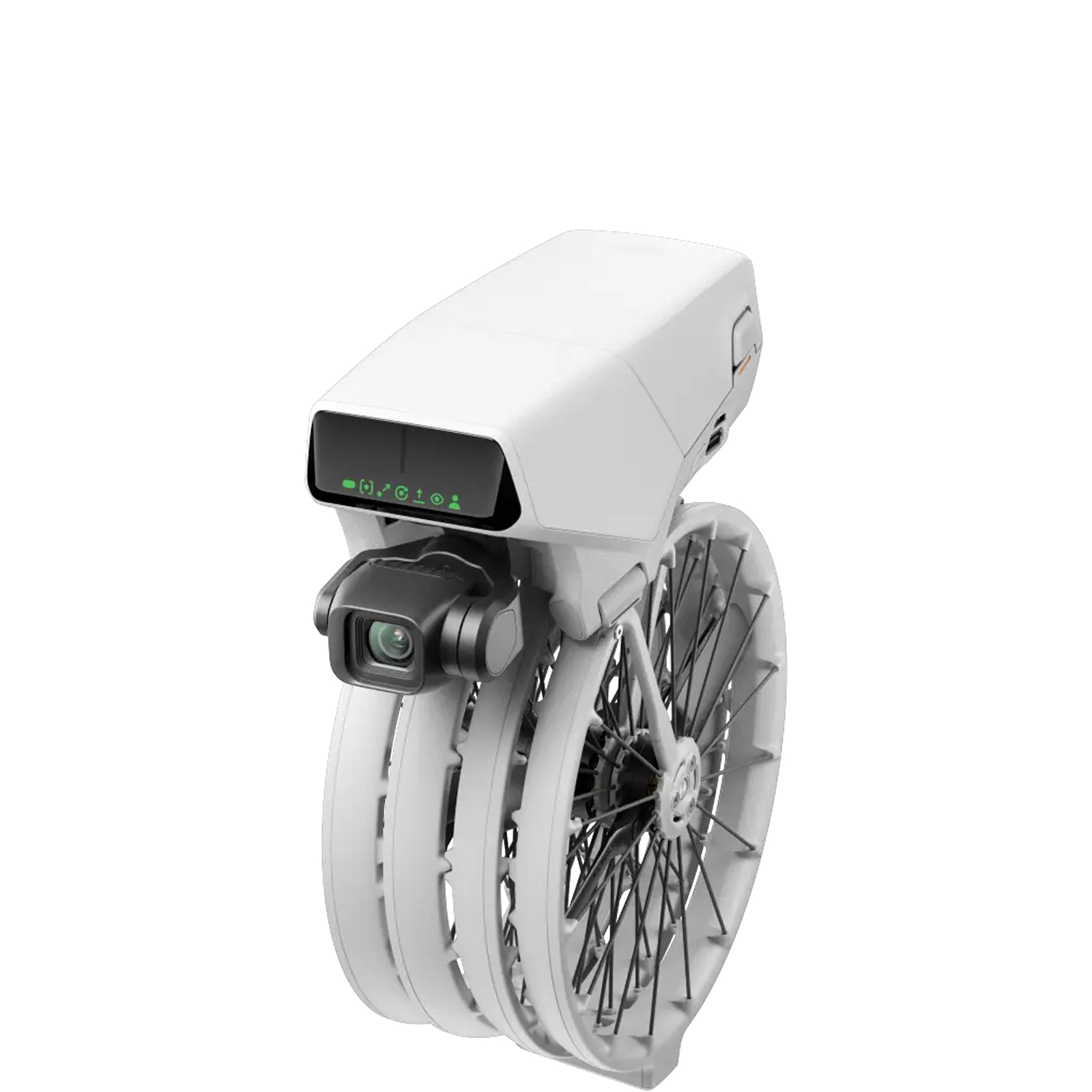
Rugged, folding, pocketable and boasting selfie AI tracking you could think this was a novelty – but it also has serious high-end specs? Best of both!
Read more below
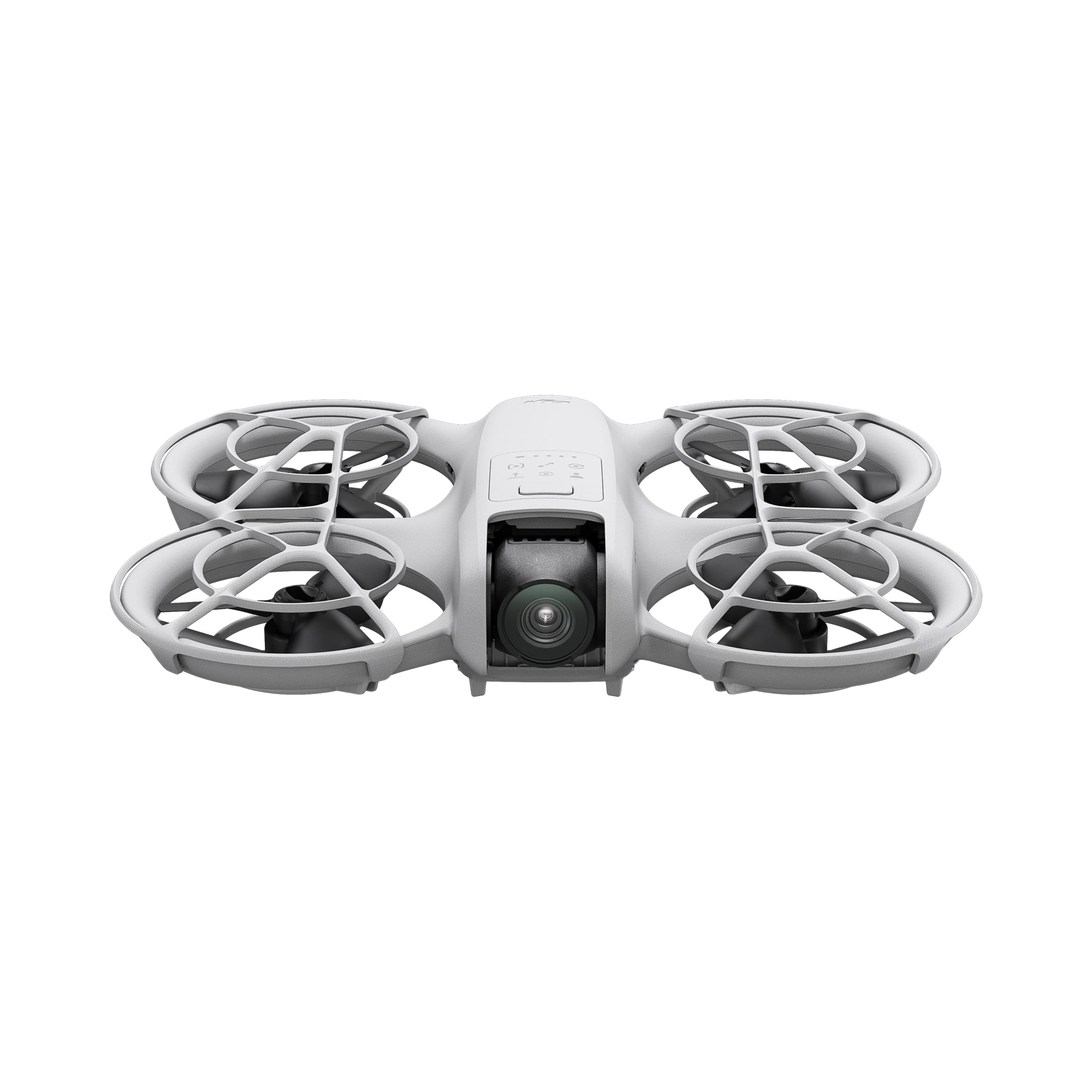
Boasting a 4K camera and a ton of control options (including hand-launch AI-tracking right up to FPV), and a relatively low cost, and really great safety frame, the Neo is a low-cost, high fetured option.
Read more below
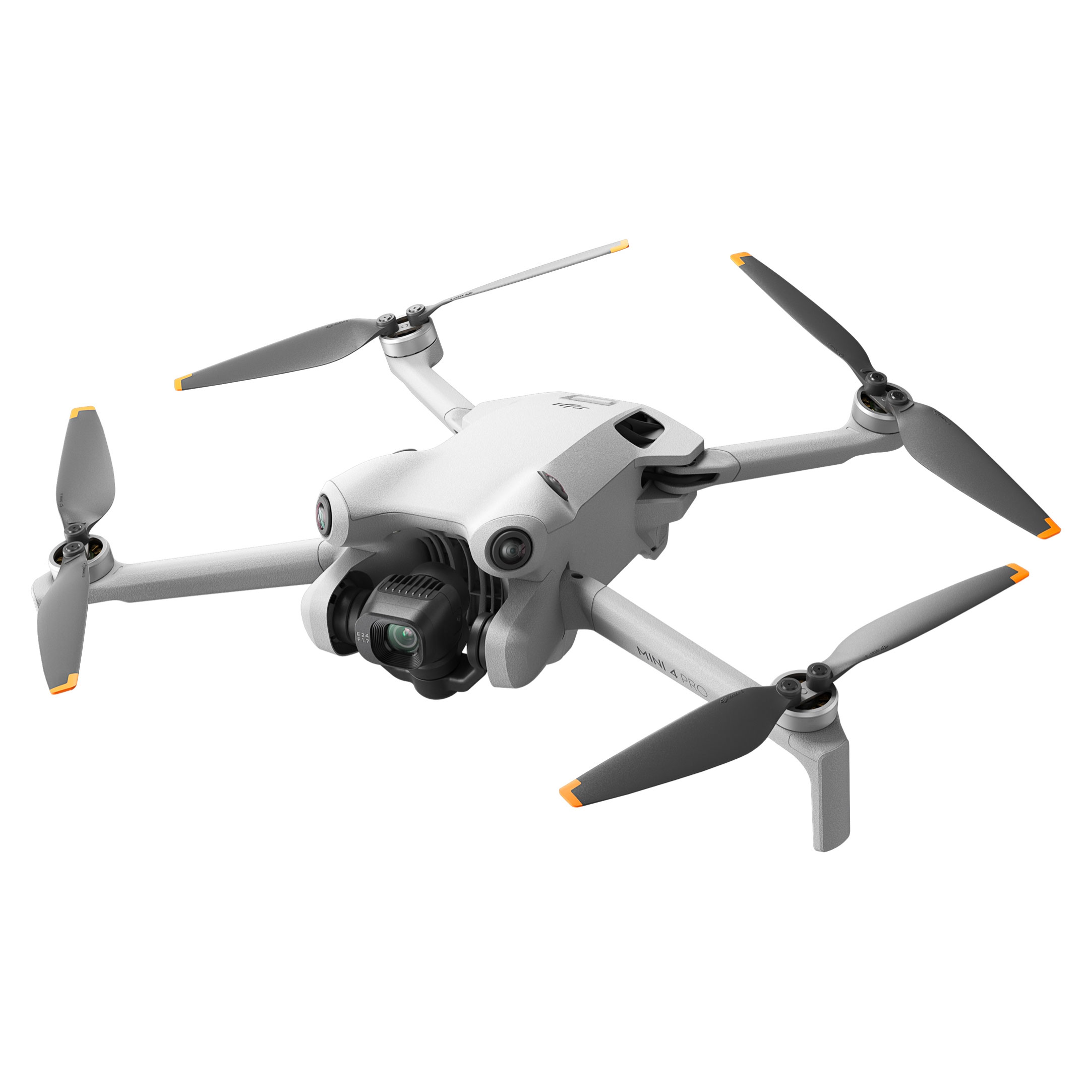
Lightweight, and sporting all-round collision sensors, this drone is easy and safe enough for beginners, but stacked with features so it might be the only drone you ever need, even if it is a bit pricey.
Read more below
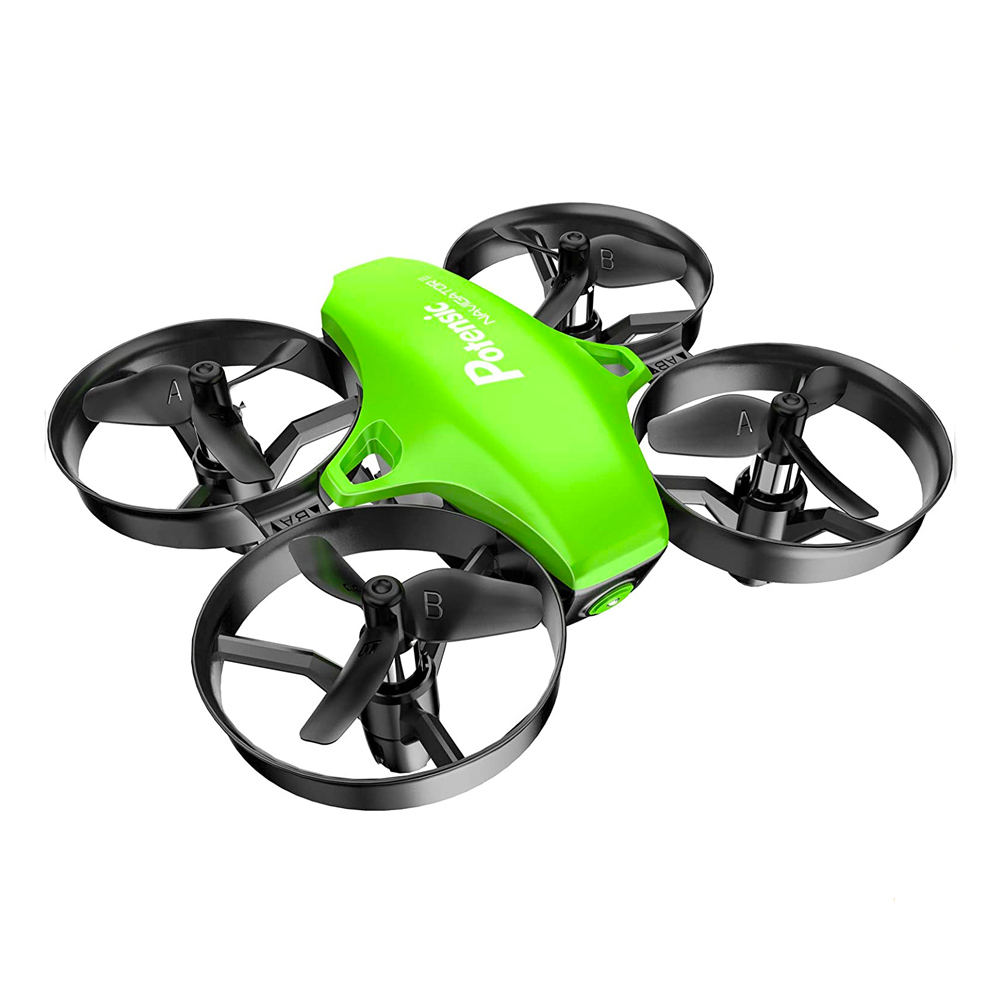
Cheap and cheerful beginners drone for fun flying in the home, this compact quadcopter has shielded propellors for safety and enough batteries for fun.
Read more below
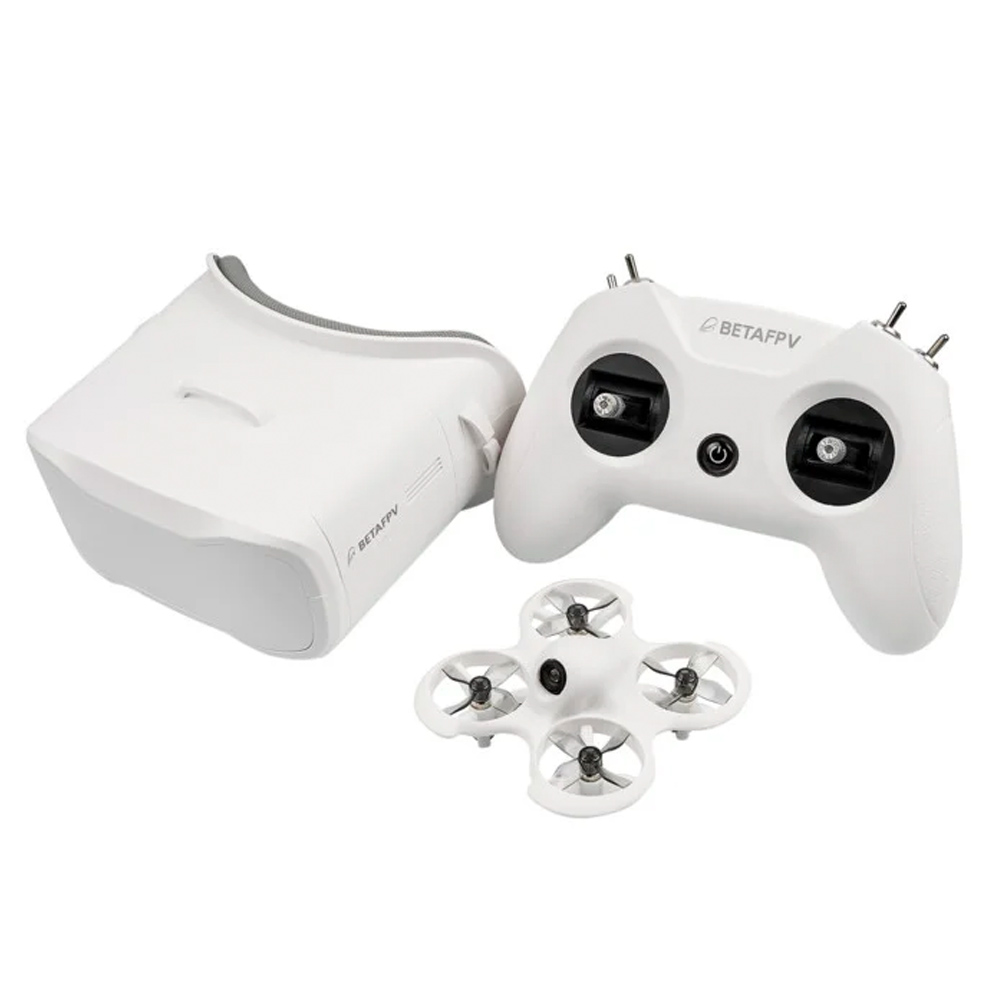
This complete bundle for novices to fly first person, including goggles and controller, might not have digital quality but it feels like a bargain.
Read more below
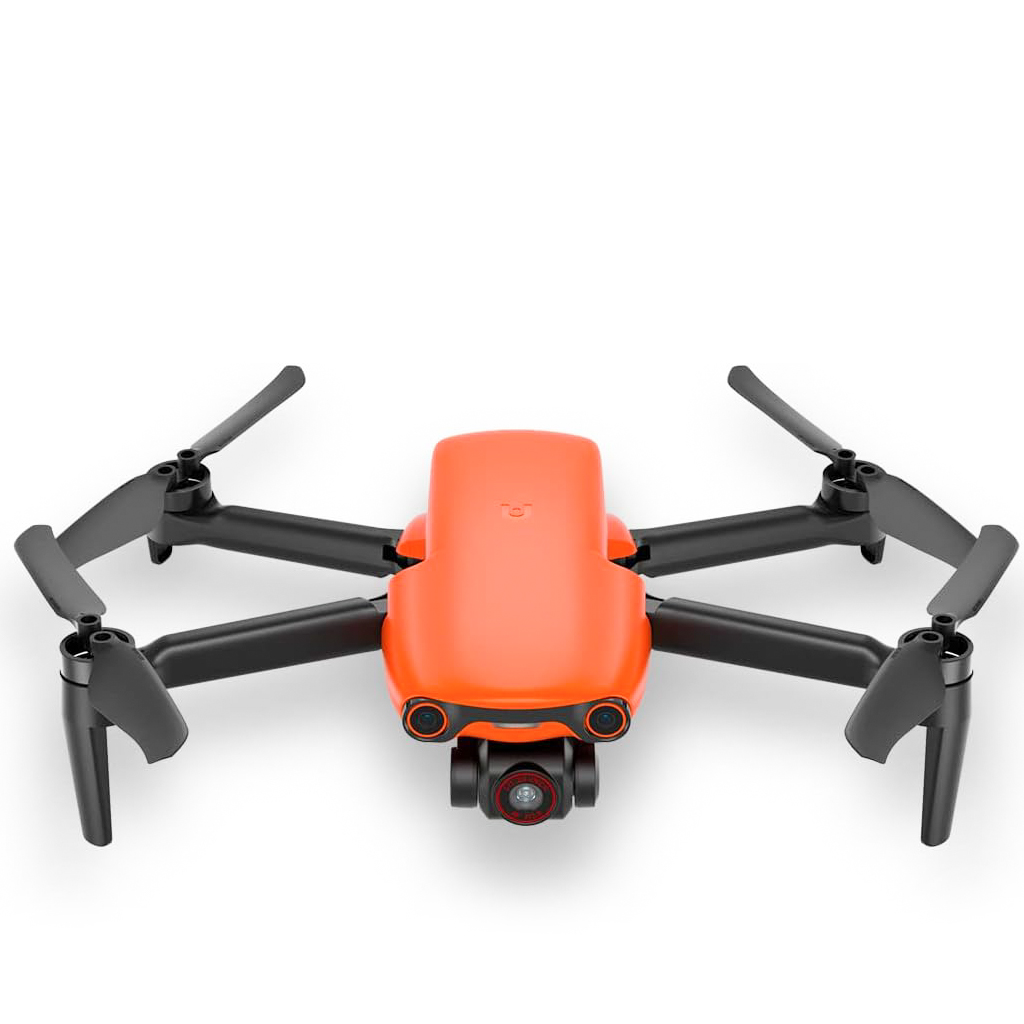
This bright orange drone offers great obstacle avoidance, shoots 4K video, and still weighs under 249g. Opt for the Nano+ version to get a larger, higher-quality sensor.
Read more below
View the full list ⇩
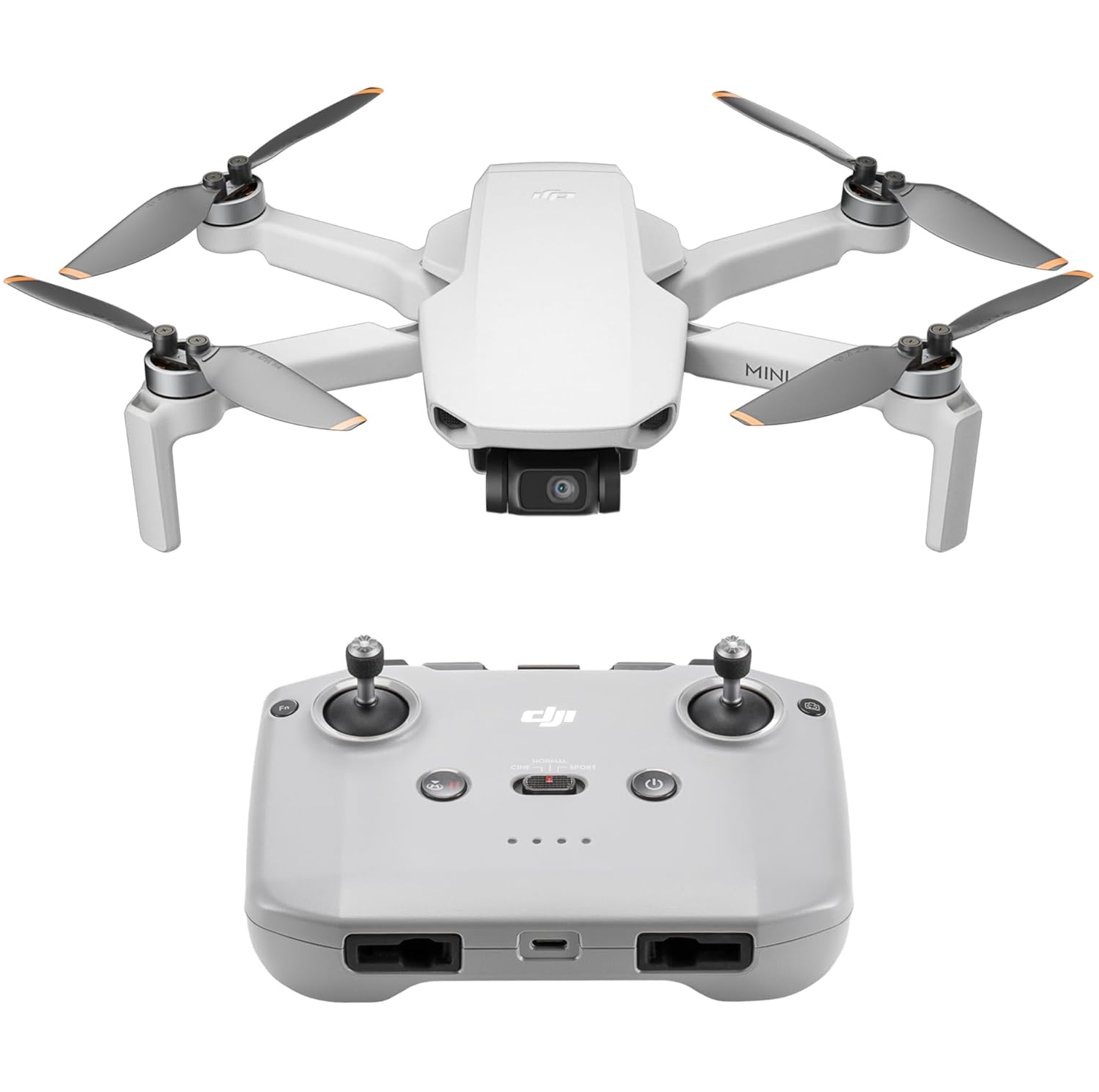
A perfect balance of tech and value with good battery life that takes pictures and video that looks as good as most phones while being easily portable.
Read more below
The best drones for beginners in 2025
Why you can trust Digital Camera World
Best Beginner Drone Overall
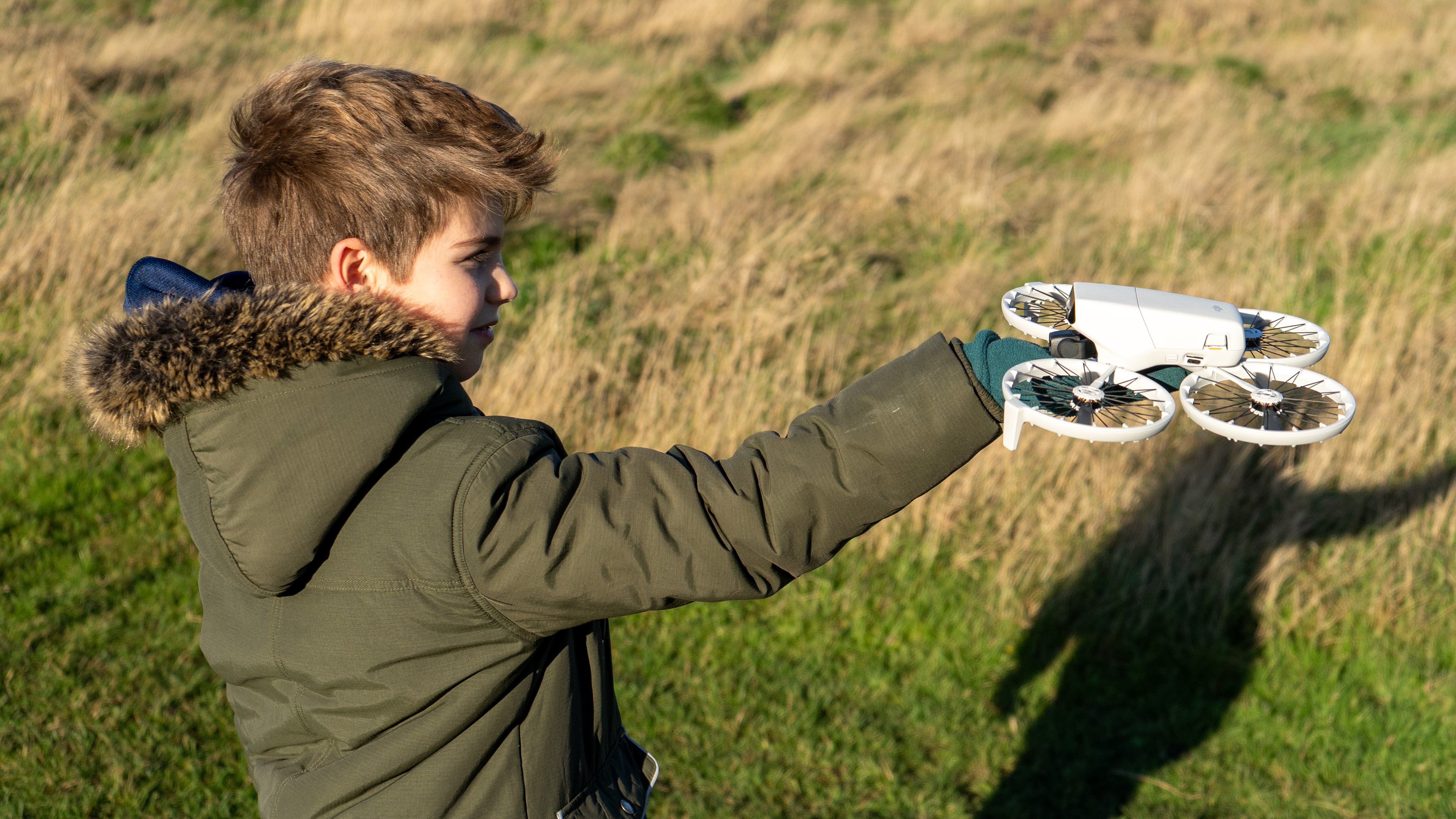
Specifications
Reasons to buy
Reasons to avoid
✅ You want social media clips: This drone can produce 5 automatic selfies and shareable QuickShots
✅ You want to fly outdoors: The Mini 4K will survive Level 5 winds
❌ You want the cheapest selfie drone: DJI has you covered with the lighter, smaller DJI Neo.
Arguably the best drone for beginners is one you won't need to replace anytime soon because it's really good, but is also one you'll have no difficulties using because it's simple. The DJI Flips scores highly on both counts.
There is a trend toward 'selfie drone' AI – meaning the drone can safely launch from the hand (with guards to protect fingers) and keep the camera on you. The Flip can do that well, and has both voice and simple indicators to let you know what to expect (as well, of course, as an app if you choose to fish your phone out of your pocket).
What sets this further apart, though, is that – while it has that in the bag – it is also a fully equipped drone, with a 1/1.3-inch image sensor capable of excellent 4K HDR video at 60fps, and 48MP Raw images. There is also a real controller supplied with it, and DJI's radio tech is such that you can have no reasonable worries about range.
Incredibly, too, other worries for beginners – collision, battery life – are also well catered for. This really is an exceptional drone that still, somehow, sneaks under the weight limit despite the safety features.
Read my full DJI Flip review to see samples
Best value beginner drone
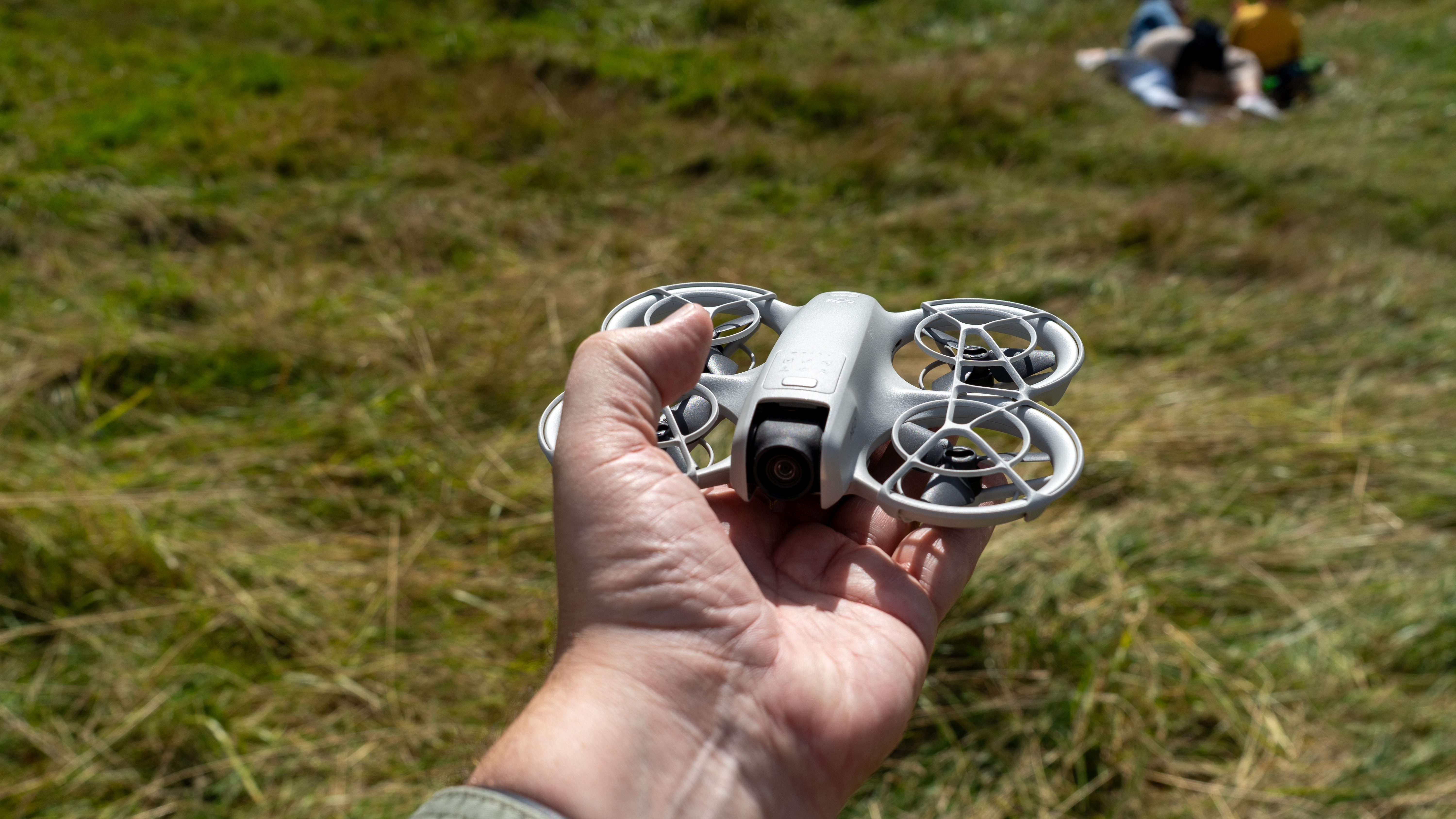
Specifications
Reasons to buy
Reasons to avoid
✅ You want options: Because you can let this drone control itself, take command with your phone, or get FPV, there is tons of choice.
✅ You want safety: The low weight (much less than the limit) and cage design makes this drone one of the safest there is.
❌ You want to work in all conditions: Small, light drones are hard to see at a distance and more vulnerable to gusts.
❌ You want the longest battery life: One compromise to keep the weight down is a relatively short battery life.
This robust little palm-launched drone – without even the vulnerability of folding parts – scores very well for safety, and it's also very accessibly priced for a DJI drone, yet still has a 4K camera. How do they pull this off?
Partly because the camera output isn't quite as impressive as that of the more photography/video dedicated devices like the DJI Flip or drones in the Mini series – it actually has a 1-axis gimbal (meaning the camera can only tilt itself one way to compensate for vibrations). This is supported by electronic image stabilization.
DJI, however, has succeeded well with this approach to a steady image in super-fast drones like the Avata 2 FPV drone, and they've also brought another massive capability from that drone here. If you choose, you can buy FPV goggles and fly the drone from 'inside'. FPV is an exciting experience, and the digital version DJI offers is spectacular compared to cheap alternatives.
On the subject of flexibility, you can also augment the standard drone with a standard radio controller which massively extends the range, or simply have it follow you using its camera and AI, or get some halfway house with on-screen controls in the phone app. That is a lot of flexibility – and decent imagery – so an obvious contender for a 'my first drone' (whatever your age)!
Read my full DJI Neo review for more details
Best Beginner Drone For Features
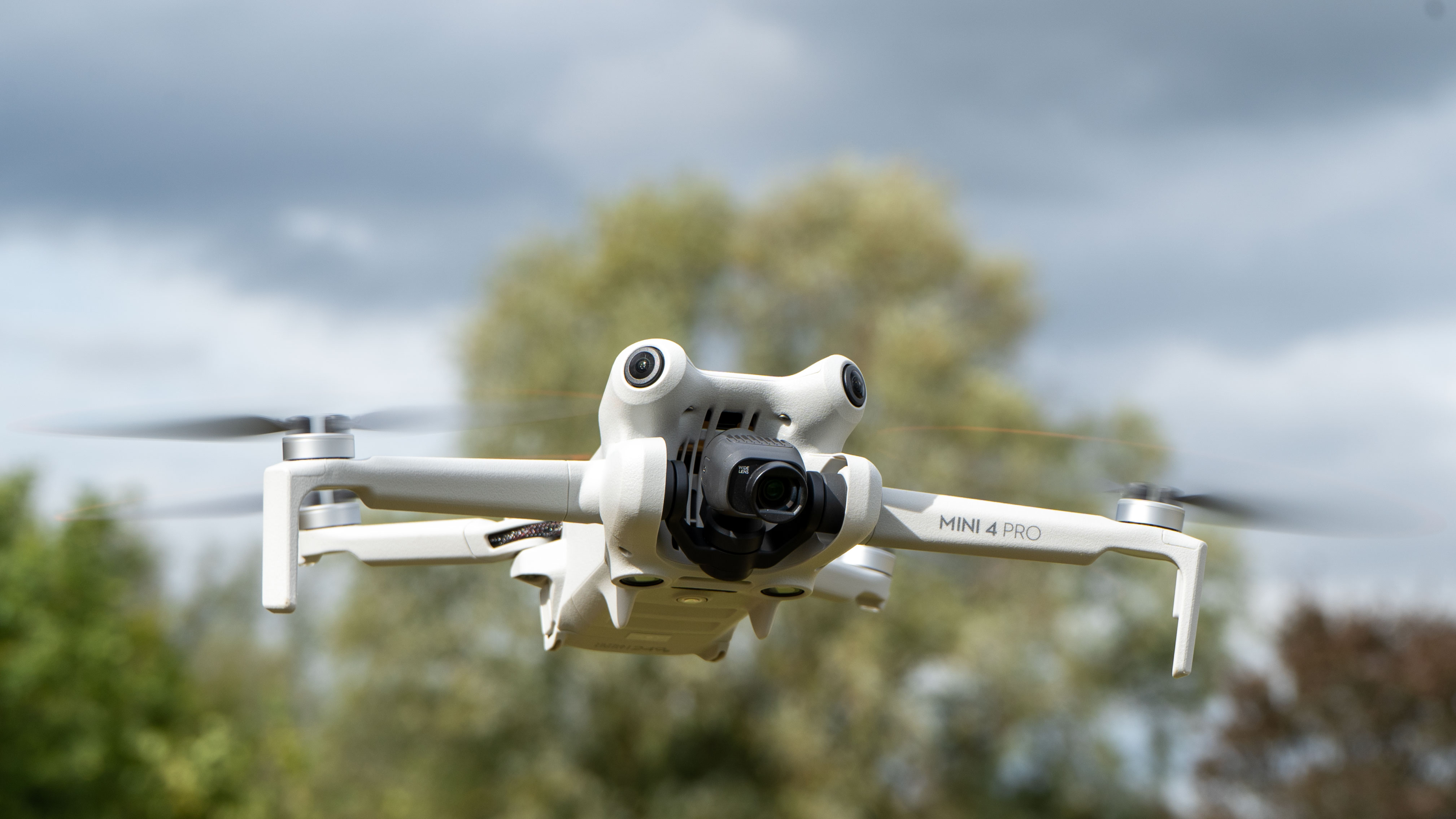
Specifications
Reasons to buy
Reasons to avoid
✅ Maximum features at a safe weight: The weight restriction is important for beginners, but that's no reason not to seek high-spec features.
✅ You want great range: The modern radio system means you get reliable control even where there is interference.
❌ You're working on a budget: If you expect to buy another drone later, this is an expensive choice.
❌ You don't need 4K video: There are cheaper options even from DJI if you don't need a camera of this spec.
I don’t throw 5-star reviews around, or at least not when the spend is this high. Yes, this isn't a cheap option, but it might be the only drone you ever need. It has an excellent 4K camera which can capture up to 100fps at that resolution, it stays under the 250g weight threshold, and the stills are striking too.
It is still a great contender for best beginner drone because it has all-round collision sensing so it will do a lot to protect its own existence. It can see objects and stop to avoid them in the air, which can save a lot of money and even minor injuries. It even boasts the ability to fly around obstacles and keep on going – and despite this, it manages to stay below the frustrating weight threshold.
The Mini 4 Pro, like the Mini 3 before it, has a rotating camera that will help capture people and social-media content without any resolution loss or time spent cropping into a horizontal image for vertical social media. For some this might be the feature that sells the drone alone.
I'm also a big fan of the fact DJI offers a choice of controllers – none (if you already have one), one that uses your phone, or one with a built-in display. There is also the option of ignoring the weight rules and fitting a longer-lasting battery. In other words, although it's a high price of entry, this drone might be the only one you need for a long time – professional flexibility in the ultra-light category.
Read our full DJI Mini 4 Pro review for more details
Best beginner drone for kids
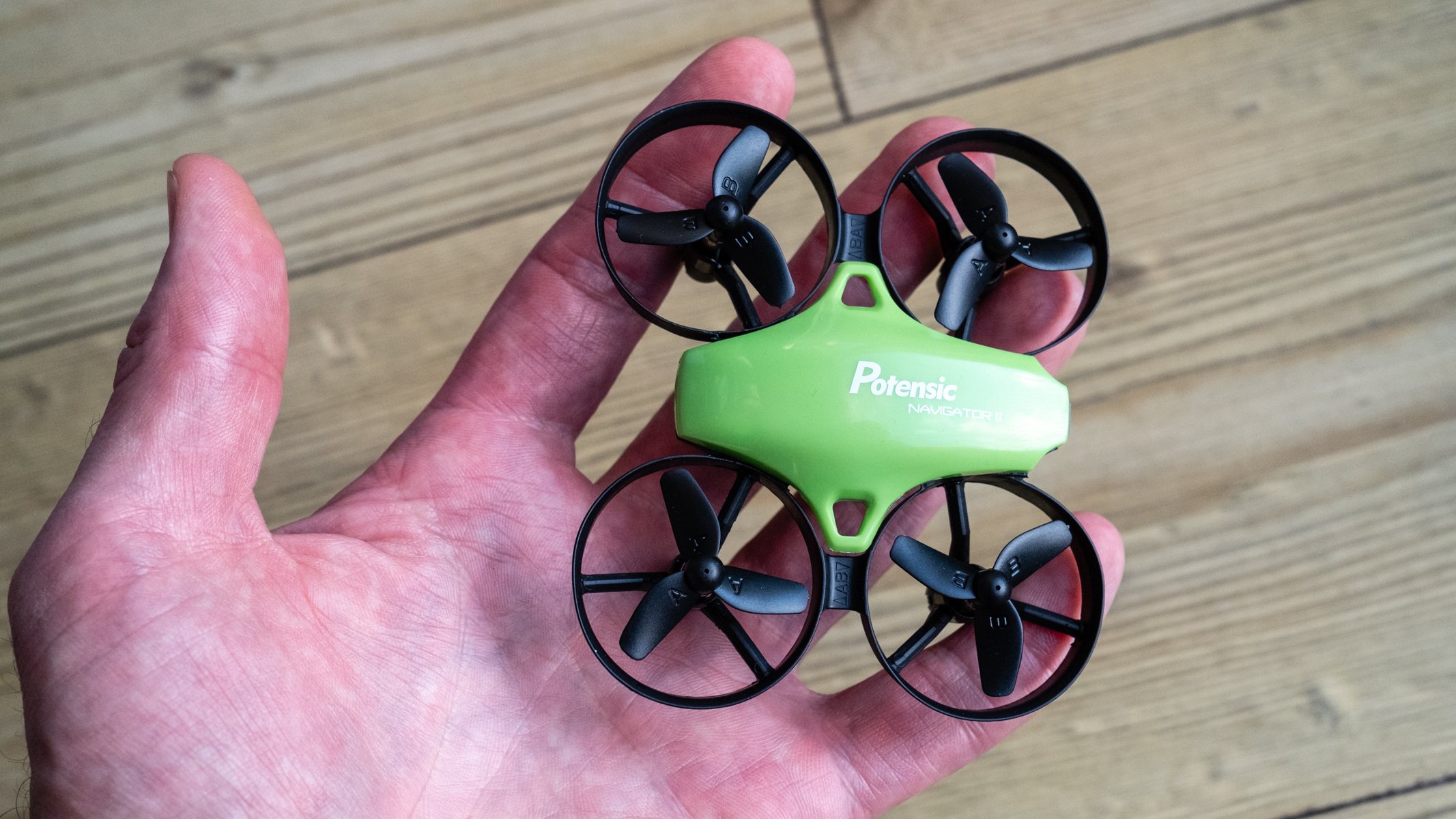
Specifications
Reasons to buy
Reasons to avoid
✅ Simple and cheap: The controller is simple, but the same basic layout as a more serious drone.
✅ Safety : The simple cage approach is effective when it comes to safety.
❌ No camera: You won't be recording any images or video!
❌ Limited battery life: The 180mAh batteries will last 10 minutes at most.
This Potensic A20 Mini Drone is perfect for kids and beginners, complete with two rechargeable batteries and a controller. I've had fun with drones like this, and while the Potensic A20 might not come with any photo or video capabilities, it's a great option for those looking for a durable and affordable option that won't be at risk of breakage from small, clumsy hands!
Featuring Altitude Hold and One Key Taking off/ Landing, every aspect of the Potensic A20 Mini Drone is designed to be simple to use, no matter whether you're introducing a kid to drones, or you're a beginner yourself. As our reviewer James Abbot put it, it's a good example of "less is more."
One of my favorite aspects of the drone is its Headless Mode. Ordinarily, the forward direction of a flying drone is the same as the nose direction. However, Headless Mode means that the forward direction will be the same as your transmitter. This is particularly useful for kids or beginners who might not be quite au fait with some of the trickier aspects of piloting a drone.
Weighing just 190g, not only does the compact and lightweight nature of the Potensic A20 make it easy to carry around or store away, but it also means that you won't have to register the drone with the FAA in the USA or CAA in the UK.
Read our full Potensic A20 review
Best FPV beginners kit
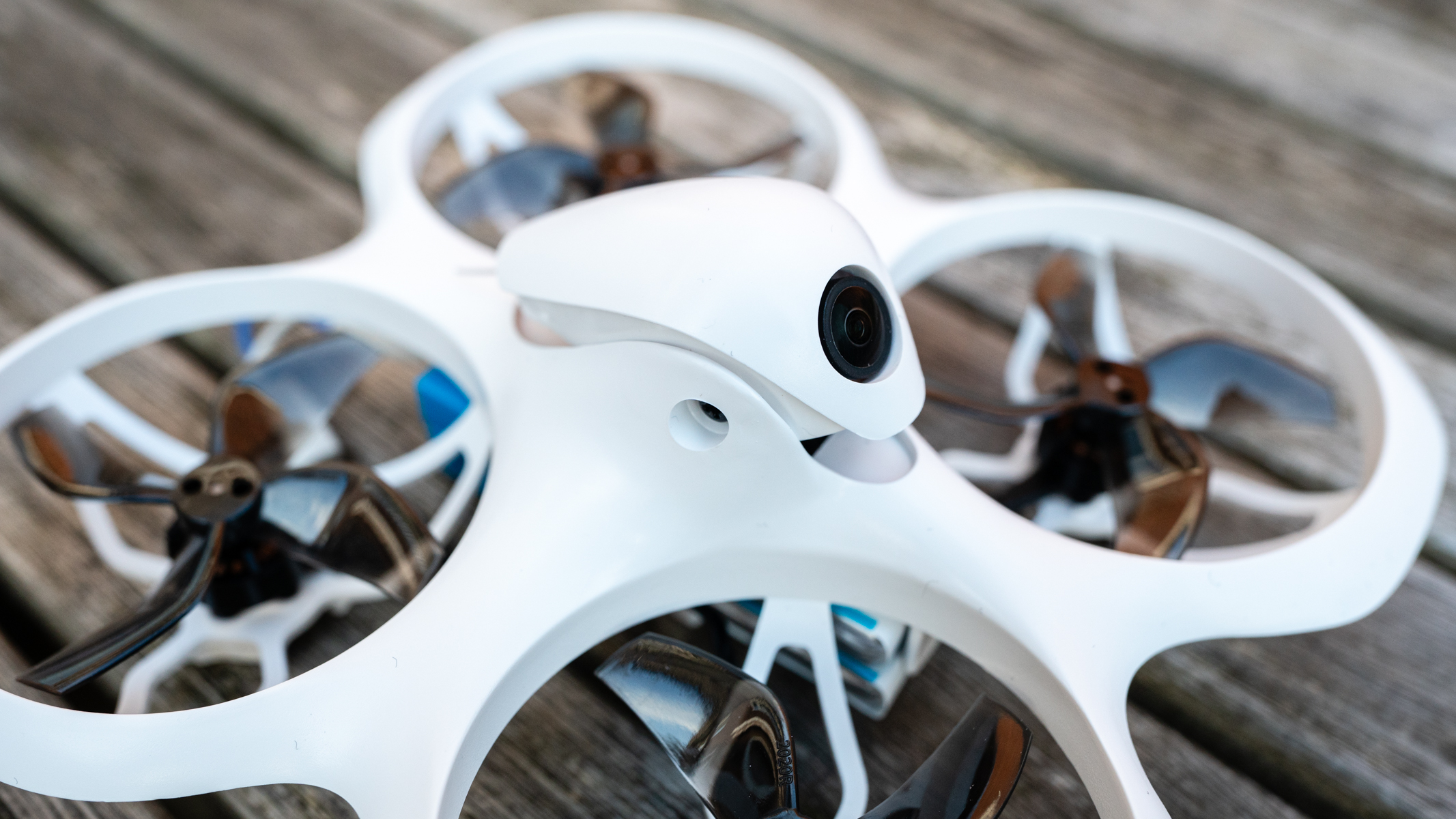
Specifications
Reasons to buy
Reasons to avoid
✅ You’d want a bundle: This is a kit with everything you need to fly.
✅ It's about the fun: A micro whoop drone with enough power for acrobatic flight.
❌ You suffer from motion sickness: FPV goggles aren’t for everyone.
❌ You’d like to take aerial photos: You can't hold the camera still.
Piloting a drone via goggles which give you the virtual cockpit experience is useful for many sub-styles, including racing, stunts, and the cinewhoop. As a beginner (to be honest, even as an experienced drone pilot) the world of FPV can be bewildering; you need a traditional radio controller, goggles (often analog), and most of the time you need to build a drone yourself, which means familiarizing yourself with motor types and manual battery charging.
You could buy a book, and dive into the message boards. You could find a hobbyist to do it for you. Or you could get a ready-to-fly (RTF) kit. Sure it might not impress some, but it’s cheaper, it works, and the controller will do all the same stuff – and work with your next drone too.
I say this – the fact you can do it means here is clearly a market for it, and even if you get into the self-build community, why not get the skills down first?
I especially appreciated the addition of a beginner-friendly altitude hold option (hover & auto-land) sensor, which is not usually found in small enthusiast drones (and wasn't there on my first FPV drone (which, as a result, I crashed a few times!)
Read our Beta Cetus X review for more
Best for visibility
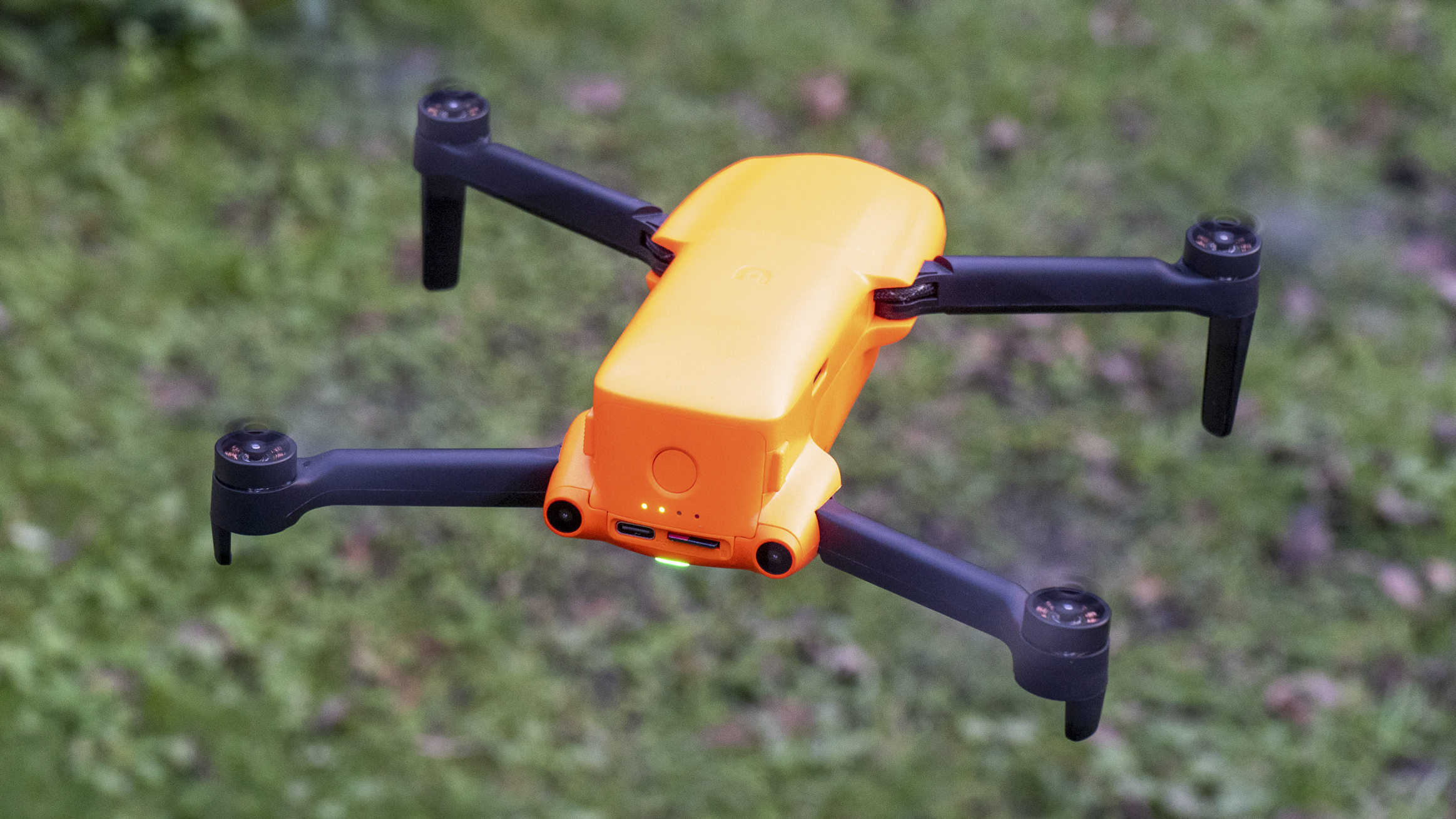
Specifications
Reasons to buy
Reasons to avoid
✅ You want great features under 250g: The Nano boasts a good feature set, including collision sensors and 4K
✅ You want a comfy controller: Autel's controller has a great video-game like feel
❌ You're looking for the best value: In the folding 4K category, DJI is probably the brand to beat.
❌ Partial collision sensors?: They're only front and back so you can still crash sideways!
The Autel Nano is cheaper than the very similar Nano Plus, which might be the better first drone of the two since it still offers 4K, though the sensor is 12.7mm across the diagonal (half-inch). Dig deeper into your pocket for the Nano Plus and you get a camera with a higher-quality 19.8mm sensor (0.8-inch).
In either case, the drone is light enough to stay under the registration rules in FAA airspace (in the UK and EU you’ll likely still need to register because of the camera). Moreover, it has front, back, and base collision sensors and the video feedback looks stunning – what Autel call ‘Skylink’ – which provides an amazing 2.7K30 resolution live view on the monitor.
The software includes a number of intelligent flight modes and tracking features, which have improved since launch, though some are less useful (filter-like effects – really?). We did like the ability to record sound from the phone and attach it automatically to the video – i.e. narrate your flight for YouTube, or just as notes.
The SuperDownload feature; wireless transfer of images and videos to a nearby smartphone at 160 MB/s, is also handy, and this drone is a serious alternative to the DJI Mini 3 Pro.
Read our full Autel EVO Nano+ review
Cheap DJI ultralight
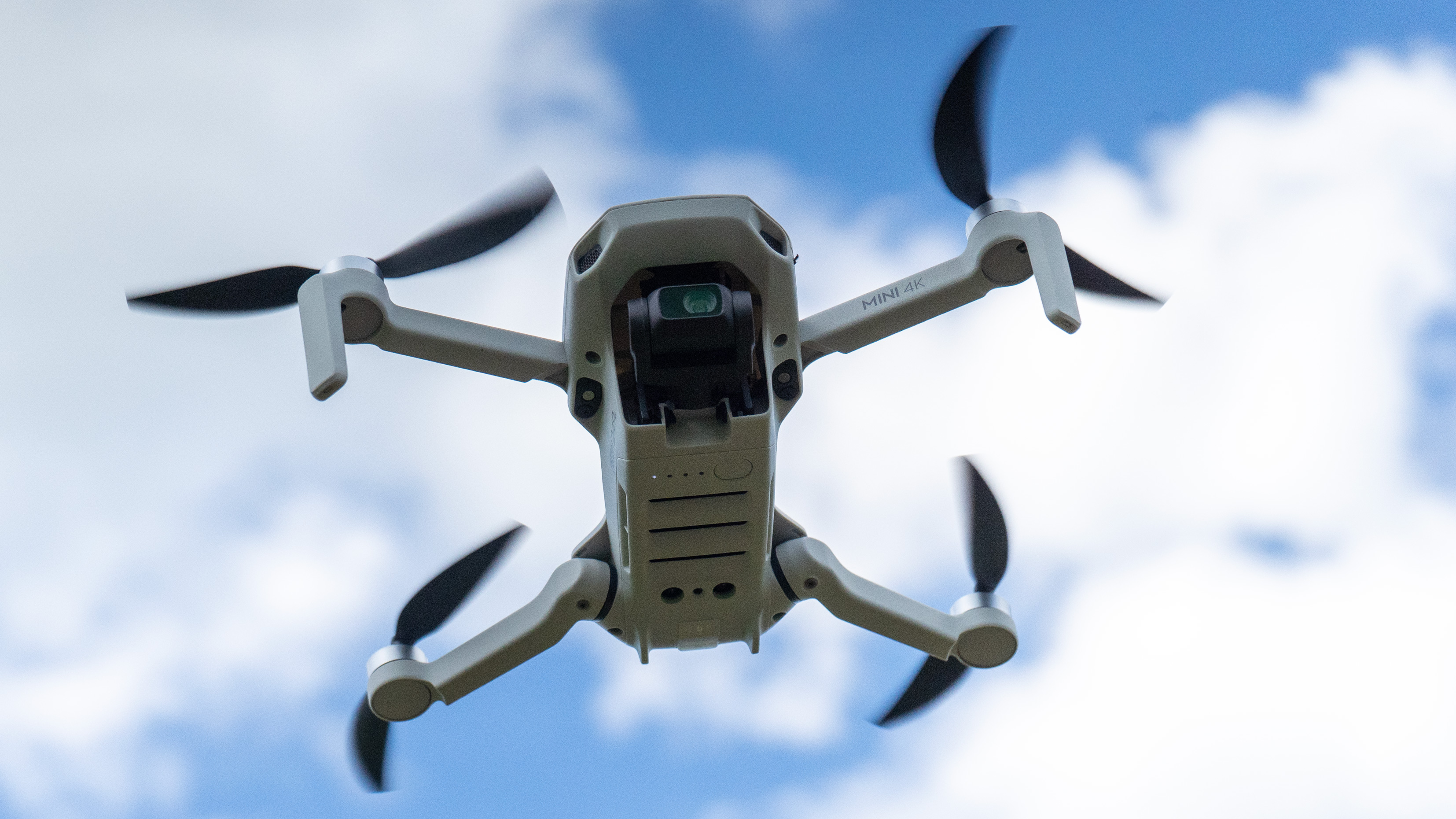
Specifications
Reasons to buy
Reasons to avoid
✅ You want social media clips: This drone can produce 5 automatic selfies and shareable QuickShots
✅ You want to fly outdoors: The Mini 4K will survive Level 5 winds
❌ You want collision sensors: It might look like it has them, but they're just vents.
This is DJI's budget camera drone, lingering around beneath the Flip in the range. For a while the base model was called the 'SE' (like Apple's phone). This update brought 4K video.
If you follow DJI (which, as a potential beginner, you might not) the other significant factor is the version of the radio system – the 'O2' based controller provides a much better range (10km / 6.2mi in the US, or 6km / 3.7mi in other territories) and keeps your phone charged even as you use it as a screen to monitor flights.
You should actually be flying that fat, but it's just the easiest way to express the radio's strength, which in turn means a more reliable preview video on the phone at any distance. The controller, the RC-N1, is also one of my favourites of all time – chunky and robust with a cunning grip for the phone and great battery life.
This is a great choice as a first-time drone. I was a fan even with the limited 2.7K of the earlier model, so the 4K removes almost all my complaints. DJI's excellent software is still ahead of competitors (though they're catching up) and the automated flights (QuickShots) are great for social. Photo fans will appreciate the option of Raw and bracketing.
As the camera is 3-axis gimbal-stabilized, video looks very smooth indeed. It is well ahead of the toy brands.
Read my full DJI Mini 4K review to see samples
Best beginners drone for cheap GPS
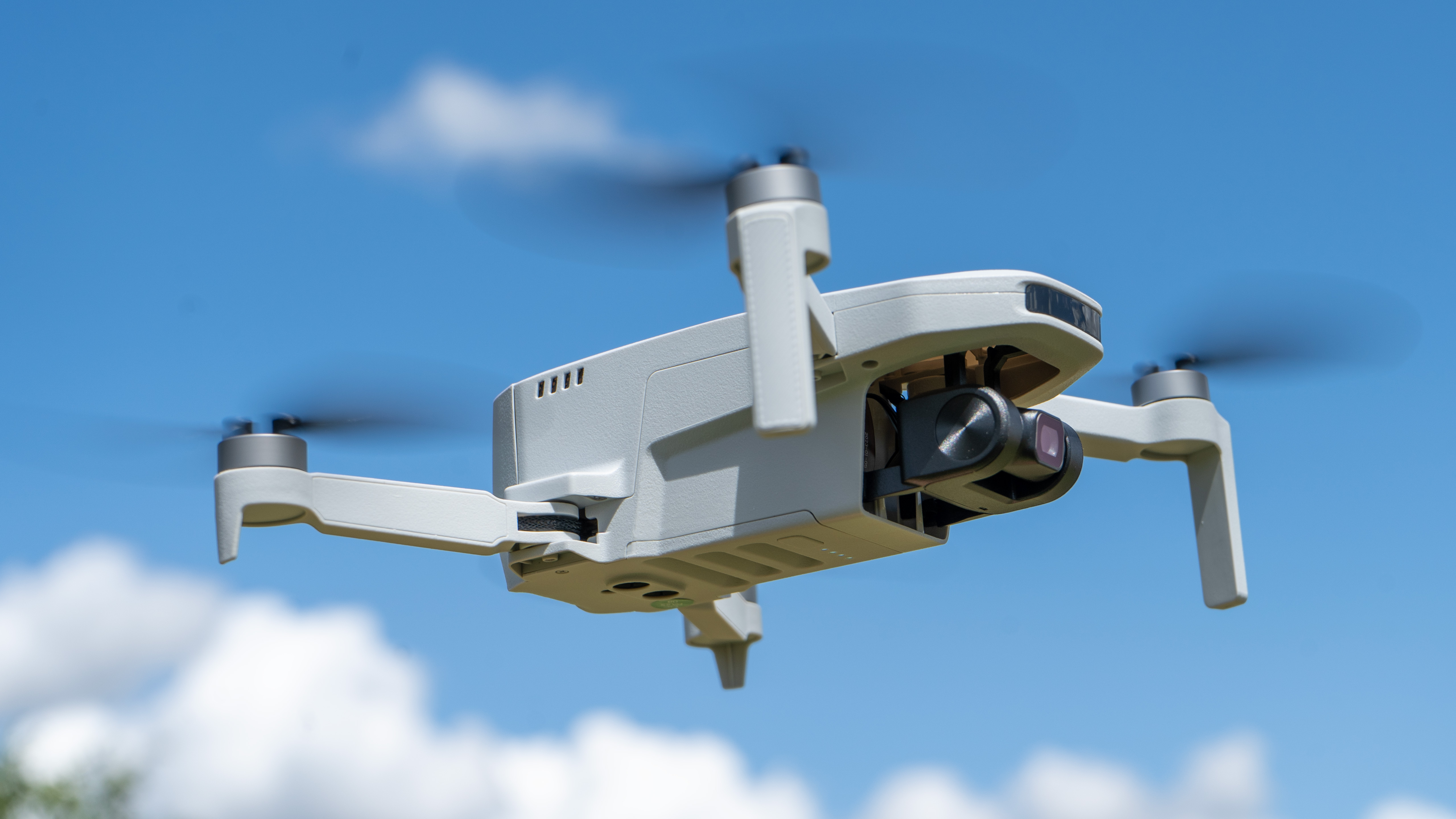
Specifications
Reasons to buy
Reasons to avoid
✅ You want good value: Beating DJI on features is impressive, and Potensic's app is mature
✅ Build quality matters: I have very few complaints about the folding drone or the phone-gripping controller
❌ You want perfect video: Electronic stabilization is good, but not as good as a 3-axis gimbal
❌ You want rapid battery charging: They take a few hours (but you can get multipacks)
This excellent drone for beginners introduces not just the experience of flying, but the basic feature set of a serious photography or videography drone for notable less than the usual cost given how close the quality is to the premium brands.
Beginners can be confident that the experience is broadly similar to that of a new DJI or other established brand because, with the launch of this drone and its sibling (the Atom, which has a more sophisticated image stabilizer) Potensic have put their feet very much on DJI's turf.
They include all the same systems; crucially GPS so the drone can hover in place without pilot help, and sensors for landing, as well as a phone app and the means to connect the controller to the phone to use it as a monitor.
There is also an introductory video in the app to assist first-timers in what is a relatively slick app, although has extra features dicretely tucked behind icons if needed. For example there are RAW photo shooting options, 4K video and features DJI withhold from their entry-level consumers like waypoints (which let you plan the drone's flight path for it).
Since all of this comes for a smaller initial investment, the Atom SE is a very tempting offer, and the electronic image stabilization is surprisingly effective.
What are the rules for drone flying?
Most of the drones we recommend weigh under 250g (8.8 ounces), as this means there are fewer drone rules and regulations – making it easier to get started. Heavier drones require registration and (simple) online exams, and a small payment, in the FAA (USA) and CAA (UK) regions (though in the UK the camera can be reason alone for registration) registration.
On a more straightforward level, lighter drones are simply a lot safer for anyone near them, which is why the rules are weight-based.
Drone FAQs
What features should my first drone have?
Of course it depends on your needs, but I personally think these are the key factors in a good drone for first timers:
• Keep it 'ultralight' (below 250g / 8.8oz) because below that threshold there is no need to register in the USA (In the UK, if you have a camera, you still need to).
• If you want to fly outdoors, GPS return to home means the drone can fly back to where it started automatically at the touch of a button or if something goes wrong.
• A radio controller (as opposed to wi-fi) also helps flying outdoors – we all know how patchy wi-fi signals can be!
• A 3-axis gimbal to stabilize the camera is great if quality video is your goal, but isn't essential when learning or having fun.
• Live view video from a camera on the drone to your phone or monitor is always helpful.
Is learning to fly a drone hard?
Flying a drone is not as hard as you might think. If you're used to playing video games or using apps on your phone, you should find learning to fly a drone pretty straightforward.
If you want to impress long-time pilots, however, operate the controls by pinching the sticks on the remote. To them, using only the thumb is a sure sign of game-controller experience, while more subtle movements are possible by using thumb-and-forefinger on each stick. It also helps dissuade you from applying the same force you might on a game controller, though most will cope with it.
Easy as it is, you'll want to do your homework and make sure you understand all your drone's features and capabilities, as well as follow any legal regulations in your area. For example, if you buy a drone in the UK or USA that weighs over 250g / 8.8oz, then you'll need to pay a small registration fee and take an exam online. (Any drone that weighs under 250g is considered a toy and safe to use.)
Rather than rushing into things, start with short and low flights and build up from there. Familiarise yourself with how the drone lands. Otherwise, you may end up crashing your drone or worse, causing an accident.
How does a drone work?
Most camera drones use the two-stick control method (or a touch-based equivalent on your smartphone) where the throttle (up/down) and rotation (yaw) are on the left stick and the direction of flight (roll & pitch) are on the right.
Most drones for beginners or otherwise will have rechargeable batteries, an even number of rotating props, a remote control receiver, and a processor to translate that input into the minor changes in the propeller speed, which is what will ultimately move the drone.
What's the best drone for beginners?
I think a beginner's drone should be under 250g, simply because it makes life easier in most places (and is safer).
With that in mind, the best drone for beginners available today (ignoring budgetary concerns) is the DJI Flip because it's about as safe as they come and still an excellent camera.
It’s also good for flying indoors thanks to downward-facing visual and sonar distance sensing systems which can help it hover even without GPS – a deal sealed with the prop guards being built right in.
How do I get started with a drone?
Once you know the controls of your drone and feel more confident flying you can start to experiment with more exciting shots. First, however, we'd strongly recommend just taking off and landing without pushing the controls too far. Take the advice of in-app tutorials, and be sure you know what any pre-programmed modes do before trying them.
How we test drones
Our full drone tests are carried out in the field, allowing us to assess the quadcopter for its flight performance in real-world conditions. We assess the drone for its ease of use, its image quality, and on its ability to cope with windy conditions. All our drone reviews and guides are overseen by on-team Managing Editor Adam Juniper who is one of the UK's leading experts on drones, a professionally-qualified commercial drone pilot, and who has written several books on flying drones, including The Drone Pilot's Handbook.
See also our guide to the best accessories for your drone
Get the Digital Camera World Newsletter
The best camera deals, reviews, product advice, and unmissable photography news, direct to your inbox!

With over 20 years of expertise as a tech journalist, Adam brings a wealth of knowledge across a vast number of product categories, including timelapse cameras, home security cameras, NVR cameras, photography books, webcams, 3D printers and 3D scanners, borescopes, radar detectors… and, above all, drones.
Adam is our resident expert on all aspects of camera drones and drone photography, from buying guides on the best choices for aerial photographers of all ability levels to the latest rules and regulations on piloting drones.
He is the author of a number of books including The Complete Guide to Drones, The Smart Smart Home Handbook, 101 Tips for DSLR Video and The Drone Pilot's Handbook.
